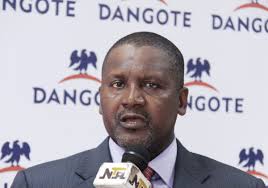
Nigeria is targeting oil production of 1.8 million barrels per day by early next year but that will be the ceiling to comply with OPEC targets its oil minister said at an oil conference holding in Cape Town South Africa. Emmanuel Ibe Kachikwu also told reporters at the conference that oil prices were encouraging but OPEC, of which it is a member, was not ruling out further cuts. Nigeria currently produces 1.6 to 1.7 million barrels per day. barrels per day. Kachwuku said that the refinery being built by Africa’s richest man in Nigeria is expected to come on stream by the end of 2019. NNPC last year launched bidding to find partners to overhaul its ailing refineries, which hardly produce any petrol due to decades of mismanagement and widespread graft.
“That should be enough to meet local needs,” Kachikwu told an oil and conference in Cape Town, referring to the Dangote refinery. Kachikwu said Africa’s biggest economy was also close to finalising the process to get private partners to revamp three existing refineries, which would add a cumulative total of 450,000 bpd as Nigeria looks to reduce its dependence on imported refined products.
Kachikwu said the response from private investors has been enormous and to date the ministry has had 26 firms have indicated interest to invest $2 billion needed to revamp the refineries. “We are almost at a threshold of finalising the process of selection,” he said. “We expect to till soil sometime hopefully in January/February,” he said. The government has previously said it was in talks with Chevron, Total and ENI.
Meanwhile Saudi Arabia said it is determined to reduce inventories further through an OPEC-led deal to cut crude output and raised the prospect of prolonged restraint once the pact ends to prevent a build up in excess supplies. Saudi Energy Minister Khalid al-Falih, speaking during an investment conference in Riyadh, said the focus remained on reducing the level of oil stocks in OECD industrialised countries to their five-year average. The Organisation of the Petroleum Exporting Countries, plus Russia and nine other producers, have cut oil output by about 1.8 million barrels per day (bpd) since January. The pact runs to March 2018, but they are considering extending it.
The market has been concerned that, once the supply cut deal comes to an end, producers will ramp up supplies again, causing prices to fall. But Falih raised the prospect of continued output restraint to prevent this. “When we get closer to that (five-year average) we will decide how we smoothly exit the current arrangement, maybe go to a different arrangement to keep supply and demand closely balanced so we don’t have a return to higher inventories.”
The oil price has recovered from below $30 a barrel at the start of 2016 to trade above $57 on Tuesday, and rose after Falih’s comments. Oil remains, however, at half its price in mid-2014. Reuters reported last week, citing OPEC sources, that producers were leaning towards extending the deal for nine months, although any decision could be postponed until early next year depending on the market. Falih did not comment on an extension but said the cuts had reduced the supply overhang in storage by half.

